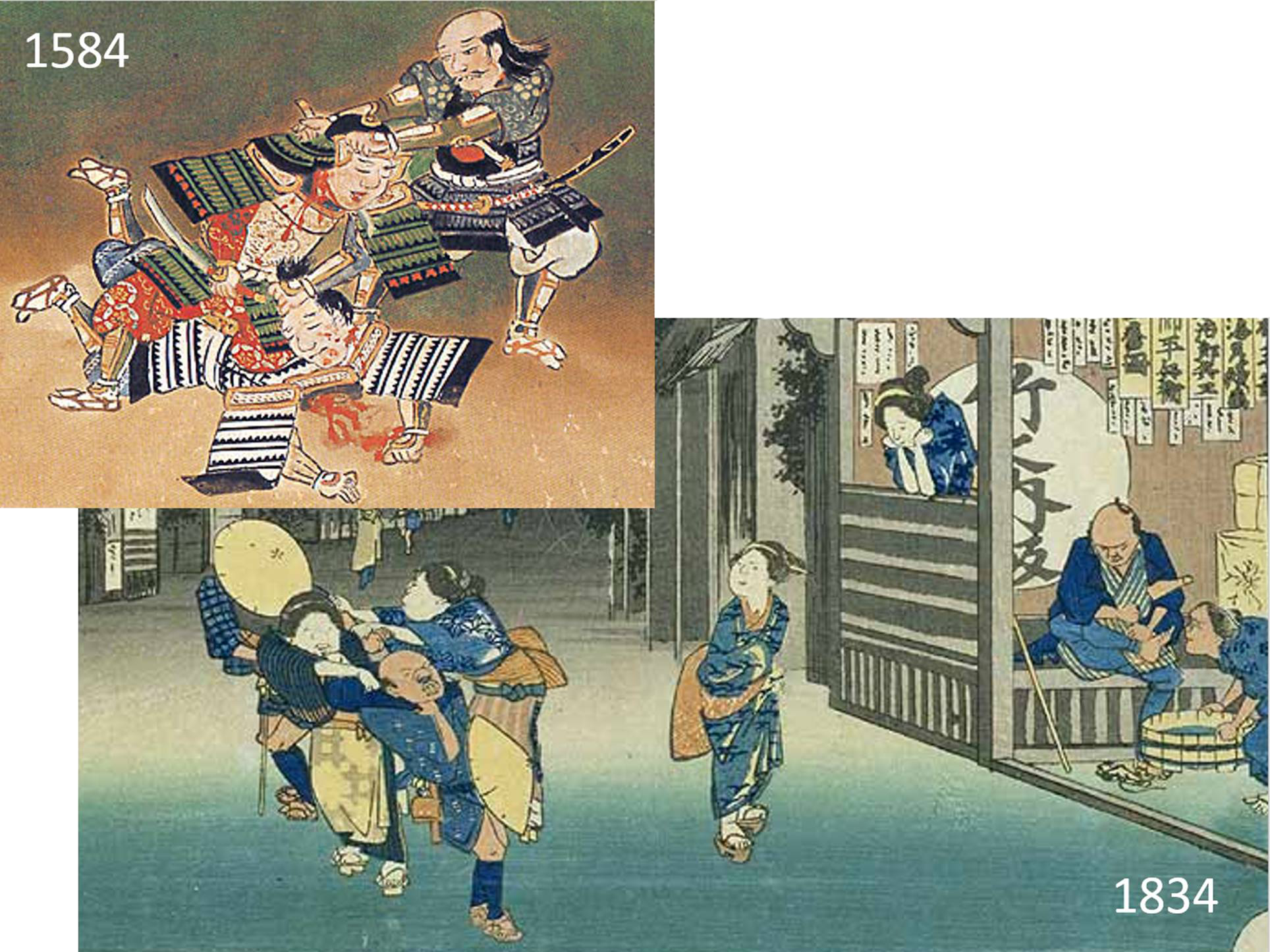
The Making of Japan’s Great Peace probes one of the great transformations in Japanese history: from the uncertainty and bloodshed of the sixteenth century, with its artistic dazzle and larger-than-life personalities, to a stable political order that achieved something rare in human history: more than two centuries of peace.
Along with the remarkable decline in violence, two related issues will particularly engage our attention: the environmental sustainability of the civilization that took shape under the Great Peace, and Japan’s interactions with the world.
During the last years of the Warring States period, Portuguese Jesuits were baptizing thousands of converts in Japan, samurai armies fought Chinese troops in Korea, and Japanese envoys sailed to Mexico, Spain, and Rome. After the 1630s, the shoguns suppressed Christianity and regulated the movement of goods and people across the borders of their realm so tightly that by the early nineteenth century, Japan was widely considered a “closed country.” For a country that was already then among the most densely settled in the world, this could have been a recipe for ecological exhaustion and impoverishment. To be sure, poverty and hunger were facts of life for millions of Tokugawa subjects, but Japan also became the home of some of the world’s largest cities and a great cultural flowering whose legacy now inspires a global audience. And when the ports open again in the 1850s, Japan’s forests were in better shape than they had been in the 1630s, and the countryside often struck foreign visitors as a smiling garden. Paradoxically, too, in the years of supposed “national seclusion,” an unprecedented number of Japanese learned how to read and write Chinese, and Japanese intellectuals acquired some of the best understanding of European science in any non-Western society at the time.
While these three themes lie at the heart of The Making of Japan’s Great Peace, it is also designed as an introductory survey course with a broadly chronological structure. But beyond helping you establish a firm grasp of the history of the late Sengoku (Warring States) and Tokugawa period (aka Early Modern Japan), this course invites you to gain new perspectives on issues you may have encountered in other contexts – from the nature of political authority and the definition of beauty to the relationship of people with their possessions and of men with their receding hairlines. Finally, this course is designed to hone your skills as a historian, and as such emphasizes the analysis of primary documents, the critical reading of secondary sources, and historical debate.
Instructor: Fabian Drixler